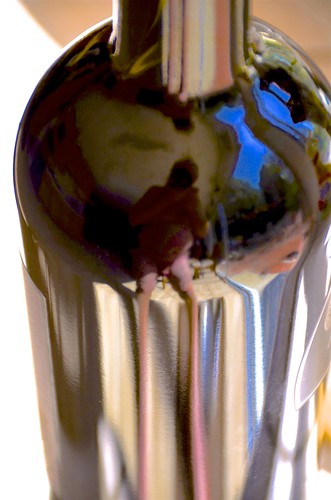Erestingly, YKL immmunoreactivity was independent of tau, indicating that in nonAD tauopathies, YKL is expressed in a taunegative subset of astrocytes. Irrespective of whether YKL might be a compensatory response to inhibit tau aggregation or, around the contrary, represents an initial occasion that facilities tau deposition requires further investigation. As anticipated, colocalization in between tau and GFAP was found in nonAD tauopathies reflecting the distinctive glial tau aggregation in these issues . The overlap observed in AD might be explained by neuropil threads Oxytocin receptor antagonist 1 web crossing astrocyte processes in close proximity which are measured as colocalization due to the resolution limits. Recent research have demonstrated that YKL levels are improved in the CSF of individuals with AD and FTD compared with these in the healthful controls . Also, a optimistic correlation involving YKL, total tau and ptau has been reported in CSF, suggesting that inflammation and tauassociated neurodegeneration are related pathophysiological processes. In agreement, animal models and coculture studies have shown that activated gliainduced neuronal tau phosphorylation and aggregation . In postmortem MedChemExpress 4-IBP brains, our semiautomated methodrevealed that total YKL levels were statistically enhanced in all tauopathies (except PiD) compared with wholesome controls. These results are in agreement with research that investigated YKL levels in CSF of AD and FTD patients . It truly is critical to note that only a restricted proportion of astrocytes (generally significantly less than) expressed YKL in human frontal cortex. Interestingly, we found a  optimistic correlation among YKL and tau pathology burden suggesting that inflammation and neurodegeneration can be closely connected processes in humans. The lack of correlation involving YKL and GFAP with each other with all the positive correlation among tau and PubMed ID:https://www.ncbi.nlm.nih.gov/pubmed/25556680 GFAP in our study also may perhaps indicate that YKL expression is independent of astrocyte activation in neurodegenerative illness. In co
optimistic correlation among YKL and tau pathology burden suggesting that inflammation and neurodegeneration can be closely connected processes in humans. The lack of correlation involving YKL and GFAP with each other with all the positive correlation among tau and PubMed ID:https://www.ncbi.nlm.nih.gov/pubmed/25556680 GFAP in our study also may perhaps indicate that YKL expression is independent of astrocyte activation in neurodegenerative illness. In co
nclusion, this can be, to our knowledge, the first detailed neuropathologic characterization of YKL expression in human brain tissue. Furthermore, the study consists of tissue samples from wholesome controls and four neurodegenerative ailments. Combining confocal microscopy and the application of a semiautomated system to quantify pathology burden, we’ve got shown that the immunoreactivity pattern of YKL in AD and also other tauopathies is astroglial. YKL is expressed by a subset of astrocytes that do not contain tau aggregates in nonAD tauopathies. Lastly, we have identified that YKL inflammatory marker is linked with tau pathology in neurodegenerative ailments that accumulate tau. Further fileAdditional file Figure S. Semiautomated method for pathological burden quantification. For all conditions tau and GFAP had been assessed using a randomized computerbased quantification of patterns and severity in immunohistochemical stains. Cortical grey matter of each case was delimited blinded to clinical phenotypes (A). It might take inflammation, phosphorylation and ubiquitination to “tangle” in Alzheimer’s illness. Neurodegener Dis.  ;:. your next manuscript to BioMed Central and we’ll help you at just about every step:We accept presubmission inquiries Our selector tool assists you to seek out one of the most relevant journal We offer round the clock buyer support Convenient online submission Thorough peer overview Inclusion in PubMed and all major indexing services Maximum visibility for your analysis your manuscript at www.biomedcentral.comHumanAnimal M.Erestingly, YKL immmunoreactivity was independent of tau, indicating that in nonAD tauopathies, YKL is expressed in a taunegative subset of astrocytes. No matter whether YKL may be a compensatory response to inhibit tau aggregation or, around the contrary, represents an initial occasion that facilities tau deposition calls for further investigation. As expected, colocalization involving tau and GFAP was discovered in nonAD tauopathies reflecting the distinctive glial tau aggregation in these problems . The overlap observed in AD may very well be explained by neuropil threads crossing astrocyte processes in close proximity which can be measured as colocalization because of the resolution limits. Current research have demonstrated that YKL levels are elevated inside the CSF of patients with AD and FTD compared with those inside the healthier controls . In addition, a optimistic correlation between YKL, total tau and ptau has been reported in CSF, suggesting that inflammation and tauassociated neurodegeneration are associated pathophysiological processes. In agreement, animal models and coculture studies have shown that activated gliainduced neuronal tau phosphorylation and aggregation . In postmortem brains, our semiautomated methodrevealed that total YKL levels had been statistically enhanced in all tauopathies (except PiD) compared with wholesome controls. These final results are in agreement with research that investigated YKL levels in CSF of AD and FTD sufferers . It truly is important to note that only a restricted proportion of astrocytes (normally less than) expressed YKL in human frontal cortex. Interestingly, we located a positive correlation among YKL and tau pathology burden suggesting that inflammation and neurodegeneration can be closely connected processes in humans. The lack of correlation involving YKL and GFAP together with all the good correlation between tau and PubMed ID:https://www.ncbi.nlm.nih.gov/pubmed/25556680 GFAP in our study also may indicate that YKL expression is independent of astrocyte activation in neurodegenerative illness. In co
;:. your next manuscript to BioMed Central and we’ll help you at just about every step:We accept presubmission inquiries Our selector tool assists you to seek out one of the most relevant journal We offer round the clock buyer support Convenient online submission Thorough peer overview Inclusion in PubMed and all major indexing services Maximum visibility for your analysis your manuscript at www.biomedcentral.comHumanAnimal M.Erestingly, YKL immmunoreactivity was independent of tau, indicating that in nonAD tauopathies, YKL is expressed in a taunegative subset of astrocytes. No matter whether YKL may be a compensatory response to inhibit tau aggregation or, around the contrary, represents an initial occasion that facilities tau deposition calls for further investigation. As expected, colocalization involving tau and GFAP was discovered in nonAD tauopathies reflecting the distinctive glial tau aggregation in these problems . The overlap observed in AD may very well be explained by neuropil threads crossing astrocyte processes in close proximity which can be measured as colocalization because of the resolution limits. Current research have demonstrated that YKL levels are elevated inside the CSF of patients with AD and FTD compared with those inside the healthier controls . In addition, a optimistic correlation between YKL, total tau and ptau has been reported in CSF, suggesting that inflammation and tauassociated neurodegeneration are associated pathophysiological processes. In agreement, animal models and coculture studies have shown that activated gliainduced neuronal tau phosphorylation and aggregation . In postmortem brains, our semiautomated methodrevealed that total YKL levels had been statistically enhanced in all tauopathies (except PiD) compared with wholesome controls. These final results are in agreement with research that investigated YKL levels in CSF of AD and FTD sufferers . It truly is important to note that only a restricted proportion of astrocytes (normally less than) expressed YKL in human frontal cortex. Interestingly, we located a positive correlation among YKL and tau pathology burden suggesting that inflammation and neurodegeneration can be closely connected processes in humans. The lack of correlation involving YKL and GFAP together with all the good correlation between tau and PubMed ID:https://www.ncbi.nlm.nih.gov/pubmed/25556680 GFAP in our study also may indicate that YKL expression is independent of astrocyte activation in neurodegenerative illness. In co
nclusion, that is, to our understanding, the very first detailed neuropathologic characterization of YKL expression in human brain tissue. Moreover, the study involves tissue samples from healthful controls and 4 neurodegenerative illnesses. Combining confocal microscopy along with the application of a semiautomated approach to quantify pathology burden, we’ve shown that the immunoreactivity pattern of YKL in AD along with other tauopathies is astroglial. YKL is expressed by a subset of astrocytes that do not include tau aggregates in nonAD tauopathies. Lastly, we’ve got identified that YKL inflammatory marker is connected with tau pathology in neurodegenerative illnesses that accumulate tau. Additional fileAdditional file Figure S. Semiautomated strategy for pathological burden quantification. For all conditions tau and GFAP were assessed working with a randomized computerbased quantification of patterns and severity in immunohistochemical stains. Cortical grey matter of each and every case was delimited blinded to clinical phenotypes (A). It might take inflammation, phosphorylation and ubiquitination to “tangle” in Alzheimer’s illness. Neurodegener Dis. ;:. your subsequent manuscript to BioMed Central and we are going to help you at every single step:We accept presubmission inquiries Our selector tool aids you to locate essentially the most relevant journal We provide round the clock customer assistance Easy on the internet submission Thorough peer critique Inclusion in PubMed and all main indexing solutions Maximum visibility for the investigation your manuscript at www.biomedcentral.comHumanAnimal M.
